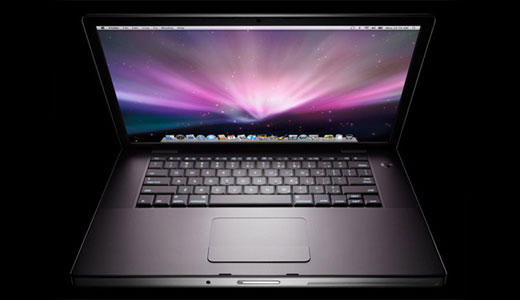Key Component Of First Generation Computer Was
Posted : admin On 14.12.2020- First Generation Computer History
- List Of Computer Components
- Second Generation Computer
- Key Component Of First Generation Computer Was Made
- 5 Basic Components Of A Computer
- Computer Fundamentals
- Computer Useful Resources
- Selected Reading

Generation in computer terminology is a change in technology a computer is/was being used. Initially, the generation term was used to distinguish between varying hardware technologies. Nowadays, generation includes both hardware and software, which together make up an entire computer system.
There are five computer generations known till date. Each generation has been discussed in detail along with their time period and characteristics. In the following table, approximate dates against each generation has been mentioned, which are normally accepted.
First Generation The period of first generation: 1946-1959. Vacuum tube based. The first generation computers used vacuum tubes for circuitry and magnetic drums for memory, and were often enormous, taking up entire rooms.The vacuum tube was developed by Lee DeForest. A vacuum tube is a device generally used to amplify a signal by controlling the movement of electrons in an evacuated space. First Generation of mordern computer (1946 - 1954) The period of first generation was 1946 - 1954. Computers of first generation used vacuum tubes as the basic components for memory and circuitry for Central Processing Unit.The first electronic computer, ENIAC (Electronic Numerical Integrator and calculator) was developed in 1947 at the University of Pennsylvania, USA.
Following are the main five generations of computers.
| S.No | Generation & Description |
|---|---|
| 1 | First Generation The period of first generation: 1946-1959. /storyist-for-windows-key-generator.html. Vacuum tube based. |
| 2 | Second Generation The period of second generation: 1959-1965. Transistor based. |
| 3 | Third Generation The period of third generation: 1965-1971. Integrated Circuit based. |
| 4 | Fourth Generation The period of fourth generation: 1971-1980. VLSI microprocessor based. |
| 5 | Fifth Generation The period of fifth generation: 1980-onwards. ULSI microprocessor based. |
Computer generations are based on when major technological changes in computers occurred, like the use of vacuum tubes, transistors, and the microprocessor. As of 2018, there are five generations of the computer.
Review each of the generations below for more information and examples of computers and technology that fall into each generation.
First Generation Computer History
First generation (1940 - 1956)
The first generation of computers used vacuum tubes as a major piece of technology. Vacuum tubes were widely used in computers from 1940 through 1956. Vacuum tubes were larger components and resulted in first generation computers being quite large in size, taking up a lot of space in a room. Some of the first generation computers took up an entire room.
The ENIAC is a great example of a first generation computer. It consisted of nearly 20,000 vacuum tubes, as well as 10,000 capacitors and 70,000 resistors. It weighed over 30 tons and took up a lot of space, requiring a large room to house it. Other examples of first generation computers include the EDSAC, IBM 701, and Manchester Mark 1.
Second generation (1956 - 1963)
The second generation of computers saw the use of transistors instead of vacuum tubes. Transistors were widely used in computers from 1956 to 1963. Transistors were smaller than vacuum tubes and allowed computers to be smaller in size, faster in speed, and cheaper to build.
The first computer to use transistors was the TX-0 and was introduced in 1956. Other computers that used transistors include the IBM 7070, Philco Transac S-1000, and RCA 501.
Third generation (1964 - 1971)
The third generation of computers introduced the use of IC (integrated circuits) in computers. Using IC's in computers helped reduce the size of computers even more compared to second-generation computers, as well as make them faster.
Nearly all computers since the mid to late 1960s have utilized IC's. While the third generation is considered by many people to have spanned from 1964 to 1971, IC's are still used in computers today. Over 45 years later, today's computers have deep roots going back to the third generation.
Fourth generation (1972 - 2010)

The fourth generation of computers took advantage of the invention of the microprocessor, more commonly known as a CPU. Microprocessors, along with integrated circuits, helped make it possible for computers to fit easily on a desk and for the introduction of the laptop.
List Of Computer Components
Some of the earliest computers to use a microprocessor include the Altair 8800, IBM 5100, and Micral. Today's computers still use a microprocessor, despite the fourth generation being considered to have ended in 2010.
Fifth generation (2010 to present)
The fifth generation of computers is beginning to use AI (artificial intelligence), an exciting technology that has many potential applications around the world. Leaps have been made in AI technology and computers, but there is still room for much improvement.
Second Generation Computer
One of the more well-known examples of AI in computers is IBM's Watson, which has been featured on the TV show Jeopardy as a contestant. Other better-known examples include Apple's Siri on the iPhone and Microsoft's Cortana on Windows 8 and Windows 10 computers. The Google search engine also utilizes AI to process user searches.
Key Component Of First Generation Computer Was Made
Additional information
5 Basic Components Of A Computer
- See our generation definition for related links and information.